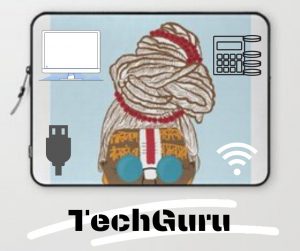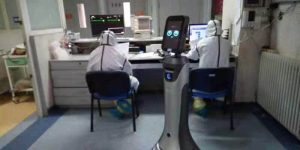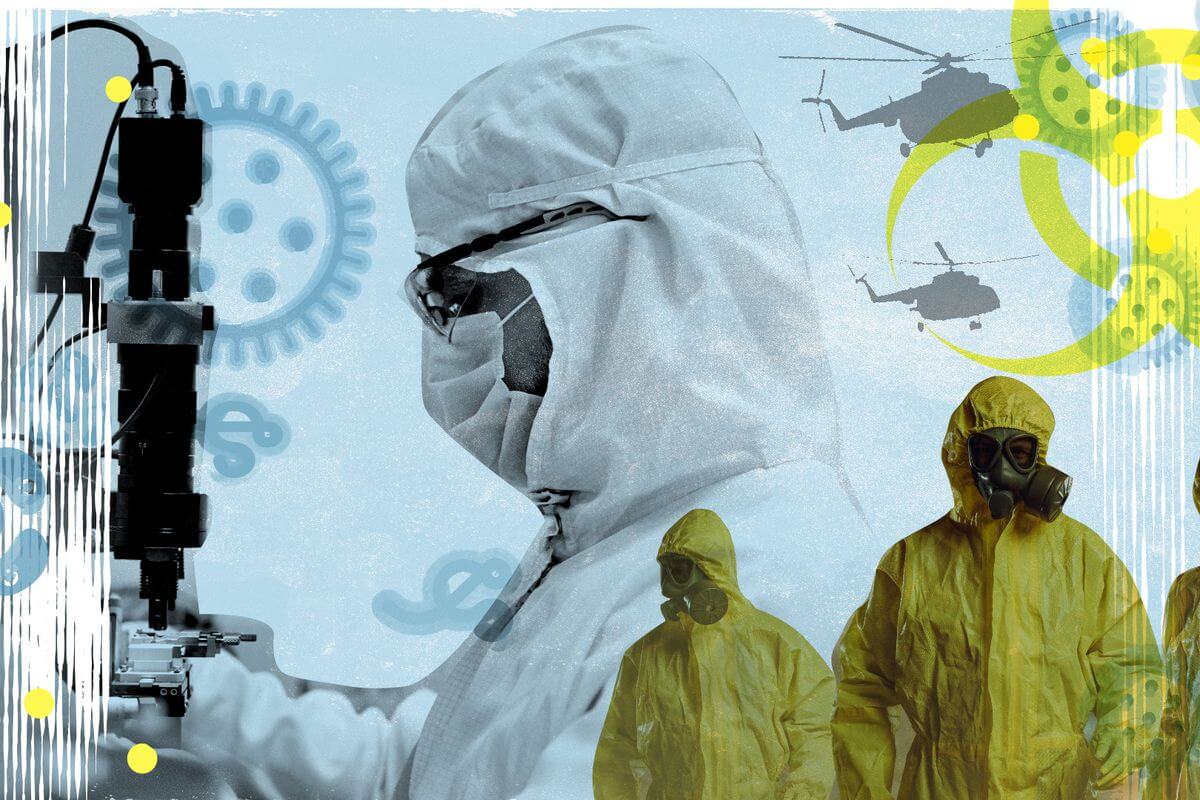The outbreak of COVID-19 pandemic has created panic wordwide. Joydev tells us that no technology is being adapted and used in many ways to fight the global threat. An exclusive for Different Truths.
 Leaving thousands dead and millions vulnerable, economies shrunken, supply line disrupted, factories shunted, and cities under lockdown, the Wuhan-based Coronavirus attack has become a global calamity. In a highly interconnected world, this massive-sized unprecedented disaster has exposed the human fragility. Among other countries, China is the worst-hit country from where this novel virus originated. Despite being the most-affected country, China has been fighting the virus with all its spirits. It was never easy for the world’s most populated country to slow down the spread of a deadly virus. All thanks to technology, China has been successful in mitigating the spread to a large extent by deploying a number of disruptive technologies, besides profiling the people at risk.
Leaving thousands dead and millions vulnerable, economies shrunken, supply line disrupted, factories shunted, and cities under lockdown, the Wuhan-based Coronavirus attack has become a global calamity. In a highly interconnected world, this massive-sized unprecedented disaster has exposed the human fragility. Among other countries, China is the worst-hit country from where this novel virus originated. Despite being the most-affected country, China has been fighting the virus with all its spirits. It was never easy for the world’s most populated country to slow down the spread of a deadly virus. All thanks to technology, China has been successful in mitigating the spread to a large extent by deploying a number of disruptive technologies, besides profiling the people at risk.
Let us look at how China made it possible
Color Coding App
The Chinese government has expanded its surveillance network by joining hands with tech giants Tencent and Alibaba to develop a colour-coded health rating system. The smartphone app, initially deployed in Hangzhou, tracks millions of people on a daily basis. The app has three colors – green, yellow, and red, which it assigns to people based on their travel and medical histories.
The Chinese government has expanded its surveillance network by joining hands with tech giants Tencent and Alibaba to develop a colour-coded health rating system. The smartphone app, initially deployed in Hangzhou, tracks millions of people on a daily basis. The app has three colors – green, yellow, and red, which it assigns to people based on their travel and medical histories. People need to mandatorily login to the app using pay wallet services and obtain a QR code giving all the information. The colour decides whether a person should be allowed in public spaces or quarantined. Only those having a green color QR code can move through any metro stations, offices, or stations, where the QR code and their body temperature is scanned and checked at the checkpoints. People having the other two codes are immediately taken under surveillance and sent for medical checkups.
Drones
While there are strict restrictions on people’s movement in the severely affected areas, drones have come to the rescue by helping transport patient samples and medical equipment. Besides enhancing the speed of the delivery, this technology is saving time and also preventing the samples from getting contaminated. Some agricultural drones are also spraying disinfectants in the countryside. Facial recognition-powered drones are used to broadcast warning messages to citizens to not to step out of homes and urge them to wear facemasks.
Artificial Intelligence
The MIT Technological Review informs that Baidu, the Chinese internet giant has made Lineatrfold algorithm available to teams that are fighting the outbreak. As Covid-19 has a single thread RNA, it is able to mutate rapidly, unlike other viruses like Ebola, Influenza, and HIV.
The data analytics and predictive models of AI are helping medical professionals

to understand a lot more about the disease. The MIT Technological Review informs that Baidu, the Chinese internet giant has made Lineatrfold algorithm available to teams that are fighting the outbreak. As Covid-19 has a single thread RNA, it is able to mutate rapidly, unlike other viruses like Ebola, Influenza, and HIV. The Lineatrfold algorithm helps predict the structure of a virus a lot faster. Baidu also built an AI-powered infrared system screening technology that detects a change in a person’s body temperature. In Beijing’s Qinghe Railway Station, it can screen 200 people in just one minute without disrupting passenger flow, says the MIT Review.
Robotics
A robot can perform everything that humans do, except contaminating the virus. They are used for a wide range of practices in places where the chance of contamination is high. Robots are preparing meals at hospitals, spraying disinfectants, cleaning surfaces, dispensing hand sanitizers, serving food, etc. At the time when healthcare professionals are at the highest risk of getting contaminated, robots are diagnosing and conducting thermal imaging at hospitals. At hotels where the passengers coming from other countries are quarantined, robots are delivering foods besides doing other routine tasks for them.
Autonomous Vehicles
When men are at homes, and avoiding people-to-people contact, autonomous vehicles (AVs) are performing what they are best at. The AVs are delivering goods like foodstuffs and medicines. Apollo, Baidu’s autonomous vehicle platform, has made its micro-car kit available for free to companies that are fighting the deadly virus. The vehicles are also carrying disinfectants and cleaning hospitals 24/7, thereby reducing the use of manpower.
When men are at homes, and avoiding people-to-people contact, autonomous vehicles (AVs) are performing what they are best at. The AVs are delivering goods like foodstuffs and medicines. Apollo, Baidu’s autonomous vehicle platform, has made its micro-car kit available for free to companies that are fighting the deadly virus.
This is the scene of China, which is suffering the most of the virus. Other countries may soon adopt these practices in case of a large outbreak of the virus. Let’s stay calm, pray, and sanitize ourselves. Like other big pandemics, this too shall pass.
Photos from the Internet





 By
By

 By
By